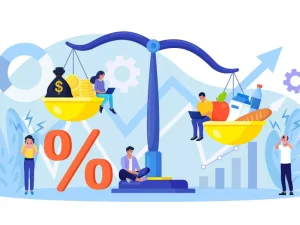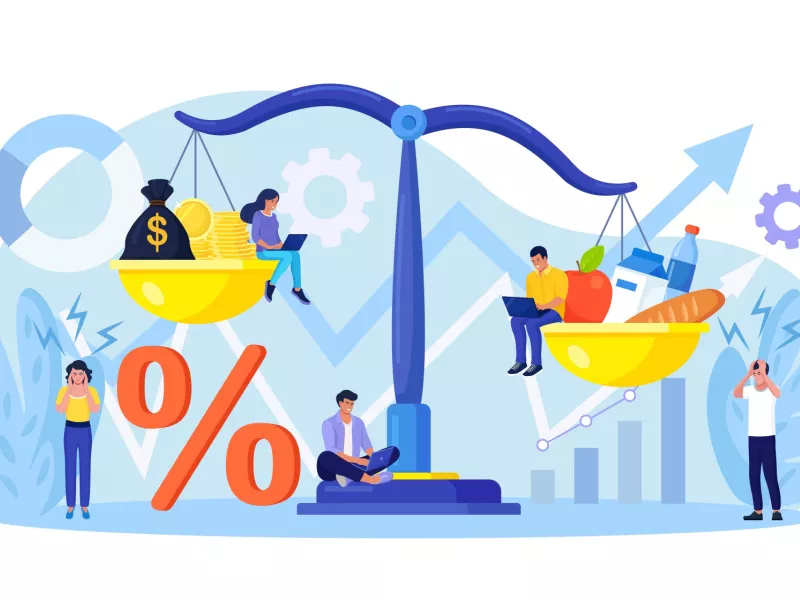Purchasing Power Parity (PPP) is one of the most fundamental theories in international economics. It provides a basis for understanding how exchange rates should behave in relation to price levels across countries. The core principle of PPP is that identical goods should sell for the same price in different countries once prices are converted into a common currency. While the theory appears straightforward, its practical application reveals a complex reality. Economists have long debated whether PPP truly holds, especially in the long run, where market forces, government policies, and economic shocks influence price and currency dynamics.
Understanding the Concept of Purchasing Power Parity
What is PPP?
Purchasing Power Parity asserts that exchange rates adjust to equalize the purchasing power of different currencies. In essence, one unit of currency should have the same purchasing power globally when converted through the market exchange rate. The theory helps economists assess whether a currency is overvalued or undervalued by comparing the cost of a standard basket of goods between countries.
For instance, if a basket of goods costs $100 in the U.S. and €80 in Europe, the PPP exchange rate should be $1.25 per euro. If the actual exchange rate is $1.10 per euro, the euro is considered undervalued relative to the dollar, since the basket is cheaper in Europe after conversion.
The Two Forms of PPP
1. Absolute Purchasing Power Parity
This version of PPP states that the exchange rate between two countries equals the ratio of their price levels. It assumes identical goods and services are available in both countries and that there are no barriers to trade. The formula for Absolute PPP is:
E = P₁ / P₂
Where:
- E = Exchange rate (domestic currency per unit of foreign currency)
- P₁ = Domestic price level
- P₂ = Foreign price level
2. Relative Purchasing Power Parity
Relative PPP focuses on changes in prices and exchange rates rather than their absolute levels. It predicts that the rate of change in the exchange rate between two currencies equals the difference in their inflation rates. Thus, a country with higher inflation will see its currency depreciate proportionally.
Formula: ΔE/E = π₁ – π₂
Where:
- ΔE/E = Percentage change in exchange rate
- π₁ and π₂ = Inflation rates in the two countries
Relative PPP tends to hold more often than absolute PPP because it allows for structural and pricing differences across countries.
Why PPP Matters in Economics
Purchasing Power Parity is more than a theoretical curiosity—it serves practical functions in international economics and finance.
Key Roles of PPP
- Exchange Rate Benchmarking: PPP provides a theoretical “fair value” for currency exchange rates.
- Comparing Economic Strength: PPP-adjusted GDP is a better indicator of living standards and purchasing power across countries than nominal GDP.
- Forecasting Tool: It acts as a long-run anchor for exchange rates, even though short-term movements may deviate.
- Detecting Currency Misalignment: Policymakers and investors use PPP to identify currencies that are overvalued or undervalued relative to fundamentals.
Short-Run Deviations from PPP
In the short run, PPP rarely holds perfectly. Exchange rates are influenced by multiple factors beyond prices, leading to fluctuations that deviate from PPP predictions.
Reasons for Short-Term Deviations
- Trade Barriers: Tariffs, quotas, and import restrictions create price differentials between countries.
- Transportation Costs: Shipping and logistics expenses prevent price equalization across markets.
- Non-Tradable Goods: Many services (e.g., housing, education, healthcare) cannot be traded internationally, breaking PPP assumptions.
- Market Imperfections: Price stickiness and information asymmetry distort market adjustments.
- Speculative Forces: Exchange rates often reflect investor expectations, interest rates, and speculative capital flows rather than pure price levels.
In short, PPP fails in the short term because markets are not frictionless, and financial flows often dominate goods-market transactions.
Does PPP Hold in the Long Run?
The Long-Run Evidence
Over longer periods, empirical studies suggest that PPP tends to hold better. Exchange rates and price levels exhibit a mean-reverting behavior, where deviations from PPP gradually diminish. This occurs because market forces eventually correct misalignments through arbitrage, inflation differentials, and trade adjustments.
For instance, if goods are cheaper in one country, foreign consumers and investors will demand more of those goods, leading to currency appreciation. Conversely, if domestic prices rise faster than those abroad, the domestic currency will depreciate over time.
Key Supporting Findings
- Mean Reversion of Exchange Rates: Over 3–5 years, exchange rates often drift back toward PPP-implied levels.
- Global Trade Integration: Increased openness and technological improvements in logistics strengthen long-term PPP convergence.
- Inflation Dynamics: Countries with persistent inflation differences tend to experience offsetting exchange rate movements, supporting relative PPP.
When PPP Fails Even in the Long Run
Despite its long-run tendency, PPP does not always hold perfectly. Persistent deviations occur due to:
- Productivity Differences (Balassa-Samuelson Effect): High productivity growth in tradable sectors raises wages and prices in non-tradable sectors, causing real exchange rate appreciation.
- Structural Changes: Shifts in economic structure, resource endowments, or labor markets alter price relationships.
- Government Policies: Currency interventions, capital controls, and inflation targeting affect exchange rate behavior.
- Consumption Preferences: Differences in consumer preferences influence relative prices even in the long run.
The Balassa-Samuelson Effect and PPP
The Balassa-Samuelson hypothesis is one of the most prominent explanations for why PPP might fail in the long run. It argues that productivity growth varies across sectors and countries, leading to systematic price level differences.
If a developing country experiences rapid productivity growth in its manufacturing (tradable) sector, wages across all sectors rise. However, productivity in services (non-tradable) sectors may not increase at the same rate, leading to higher service prices. This results in an overall rise in the country’s price level, making its currency appear overvalued in PPP terms.
Empirical Research on PPP
Numerous studies have analyzed PPP using time-series and panel data. The general consensus is:
- Short-run deviations from PPP are substantial and can persist for several years.
- Half-life of PPP deviations (time taken for half of a deviation to disappear) is typically 3–5 years.
- Panel data methods show stronger long-run PPP evidence when multiple countries and extended periods are considered.
- Real exchange rate adjustments are gradual and influenced by both nominal rigidities and slow-moving economic fundamentals.
These findings suggest that while PPP may not be a precise short-term rule, it functions as a long-term equilibrium condition toward which exchange rates tend to gravitate.
Practical Implications of PPP
PPP has important implications for policymakers, investors, and businesses.
For Policymakers
- Helps evaluate currency misalignment and set appropriate exchange rate policies.
- Aids in assessing international competitiveness by comparing real exchange rates.
For Investors
- Provides a tool to assess whether a currency is undervalued or overvalued, informing long-term investment decisions.
- Useful for forecasting exchange rate trends and managing currency risk.
For Businesses
- Assists multinational corporations in pricing strategies and foreign market evaluations.
- Facilitates more accurate cost comparisons for production and sourcing across countries.
Conclusion
Purchasing Power Parity remains a cornerstone concept in international economics. While short-run deviations are common due to trade barriers, market frictions, and speculative forces, PPP often exhibits mean-reverting behavior in the long run. Over time, inflation differentials and trade adjustments push exchange rates toward equilibrium levels consistent with PPP. However, real-world complexities—such as productivity differences, policy interventions, and structural factors—ensure that PPP is rarely exact. Instead, it serves as a theoretical benchmark and long-run guidepost for understanding currency valuation and international price dynamics.
Frequently Asked Questions (FAQ)
1. Why does PPP often fail in the short run?
PPP fails in the short run because of transaction costs, trade barriers, non-tradable goods, and speculative capital flows that prevent prices from equalizing quickly.
2. What is the main difference between Absolute and Relative PPP?
Absolute PPP compares actual price levels across countries, while Relative PPP focuses on the rate of change in prices (inflation) and exchange rates over time.
3. How does inflation affect PPP?
Countries with higher inflation rates tend to experience currency depreciation over time, consistent with relative PPP.
4. Does globalization strengthen PPP?
Yes, increased global trade and reduced barriers enhance price convergence and make PPP more likely to hold in the long run.
5. What role does productivity play in PPP deviations?
Higher productivity in tradable sectors can lead to overall price increases and real exchange rate appreciation, explaining why PPP may not hold perfectly (Balassa-Samuelson effect).
6. How is PPP used in comparing living standards?
PPP-adjusted GDP accounts for differences in price levels, offering a more accurate comparison of real purchasing power across countries.
7. Can PPP predict future exchange rates accurately?
PPP provides a useful long-term reference point, but it is not reliable for short-term exchange rate forecasting due to market volatility and speculative behavior.
















